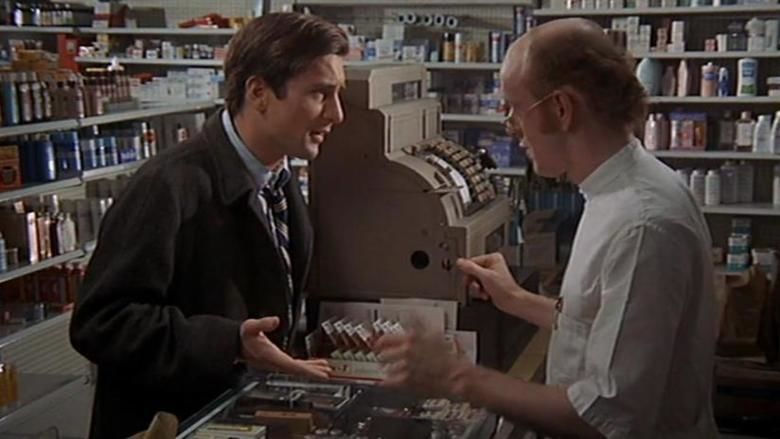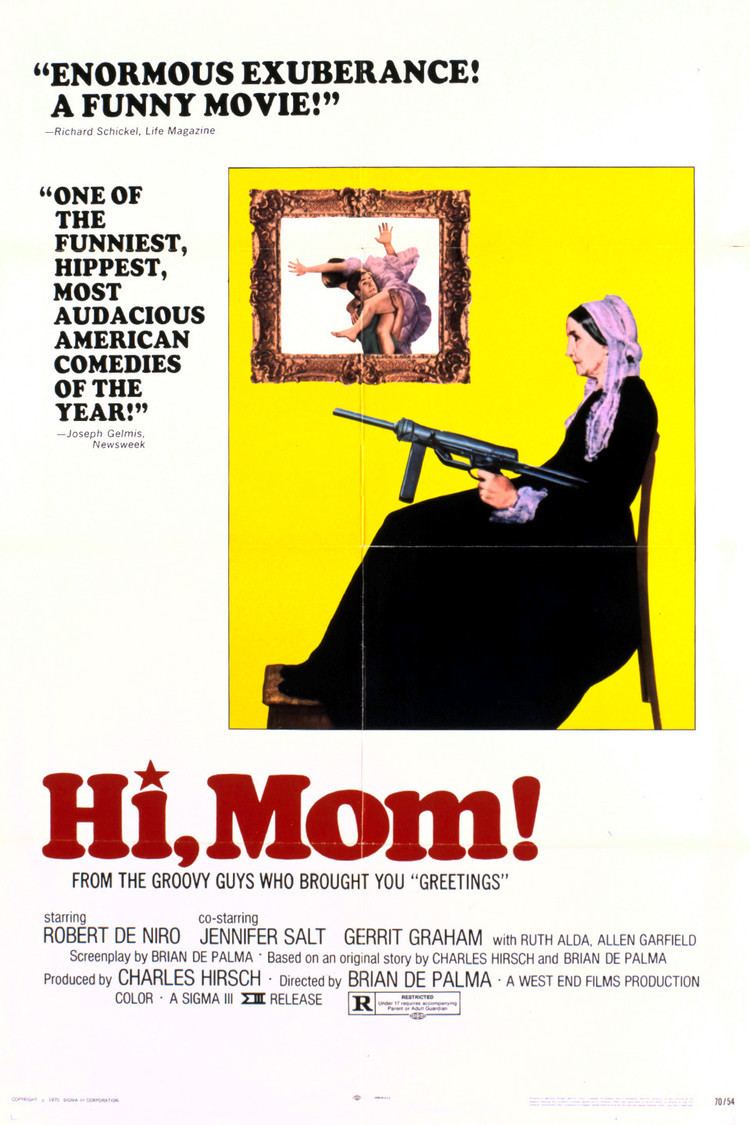Hi, Mom!
7 /10 1 Votes7
78% Rotten Tomatoes Genre Comedy, Drama Country United States | 6.2/10 IMDb Duration Language English | |||||||||||||||||||||||||||||||||
 | ||||||||||||||||||||||||||||||||||
Release date April 27, 1970 (1970-04-27) Screenplay Brian De Palma, Charles Hirsch Producers Brian De Palma, Charles Hirsch Cast (Jon Rubin), (Judy Bishop), (Joe Banner), (Superintendent), (Jeannie Mitchell), Abraham Goren (Pervert)Similar movies Sweet Sweetback's Baadasssss Song , Long Distance Revolutionary: A Journey with Mumia Abu-Jamal , Mumia Abu-Jamal: A Case for Reasonable Doubt? , Porky's , Sliver , Sukimasuki Tagline God bless our humble upper-middle-class high-rise co-op and keep it free from smut peddlers, militants, urban guerrillas and Greenwich Village liberals. | ||||||||||||||||||||||||||||||||||
Hi, Mom! (1970) is a black comedy film by Brian De Palma, and is one of Robert De Niro's first movies. De Niro reprises his role of Jon Rubin from Greetings (1968). In this film, Rubin is a fledgling "adult filmmaker" who has an idea to post cameras at his window and film his neighbors.
Contents

Cast

Be Black, Baby

The film's most memorable sequence involves a black radical group who invite a group of WASPs to feel what it is like to be black, in a sequence titled Be Black, Baby. The sequence is both a satire and an example of the experimental theatre and cinéma vérité movements. Shot in the style of a documentary film using a hand-held camera and grainy black and white film, it features a theater group of African American actors interviewing white-skinned Caucasians on the streets of New York City, asking them if they know what it is like to be black in the United States.
Later, a group of white theater patrons attend a performance by the troupe. First they are forced to eat soul food. The white audience is then subjected to wearing shoe polish on their faces, while the African American actors sport whiteface and terrorize the people in blackface. The white audience members attempt to escape from the building and are ambushed in the elevator by the troupe. As two of the black actors rape one of the white audience members, Robert De Niro arrives as an actor playing an NYPD policeman, and arrests members of the white audience under the pretense that they are black. The entire sequence plays with natural sound, is acted to appear unrehearsed, and apart from several cuts plays in "real time". De Palma's familiarity and collaboration with experimental theatre informs the sequence and exerts considerable emotional impact upon viewers, simultaneously engaging their personal responses to racism and commenting on the deceptive and manipulative power of cinema.
The sequence concludes with a thoroughly battered and abused audience raving about the show, showering praise on the black actors, crowing "Clive Barnes [New York Times theater critic] was right!"
MPAA rating board
According to the book The Movie Rating Game by Stephen Farber (Public Affairs Press, 1972), the film was originally given an "X" rating by the MPAA, but after a few minor trims, it was approved for an R. The main cut occurred during the scene where Gerrit Graham paints his entire body for the Be Black, Baby performance. He hesitated for a moment about painting his penis, and then finally finished the job. The actual painting of the penis was deleted to get the R. (The first film, Greetings, was released with an X after losing an appeal to change it to an R.)
References
Hi, Mom! WikipediaHi, Mom! IMDbHi, Mom! Rotten TomatoesHi, Mom! themoviedb.org
